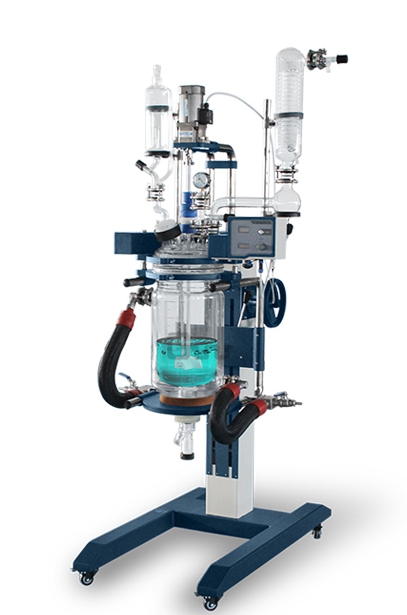
06 มิถุนายน 2567
ผู้ชม 1156 ผู้ชม
| Glass Reactor with CE 50L/80L/100L | |
|
Description : |
|
|
Lifting Glass Reactor
|
|
| Applications : |
| Speed-regulation glass reactors are mainly used for synthetic reaction, distillation and concentration of different types of materials. We have single wall, double wall and triple wall glass reactors. The reactor can be pumped to a negative pressure state according to some experimental requirements. A constant pressure funnel or an adjusting valve on the feeding bottle allows you to add material to the vessel at a uniform and controlled speed. Condenser helps to recover some materials distillated during reaction. Circulating liquid can be filled into the jacket to heat or cool materials inside. Triple wall glass reactor with two jackets, the inner jacket is for circulating liquid, and the outer layer should be pumped to vacuum condition for thermal insulation. |
| Advantages : |
|
| Detail Sketch : |
/Lifting%20Glass%20Reactor%205L-10L-20L-30L-50L%20(GRL%20series)%20_1.jpg) |
| Lifting and Rotating function : |
/Lifting%20Glass%20Reactor%205L-10L-20L-30L-50L%20(GRL%20series)%20_2.jpg) |
| Excellent & durable parts for your safe experiment : |
/Lifting%20Glass%20Reactor%205L-10L-20L-30L-50L%20(GRL%20series)%20_3.jpg) |
| Specifications : | |
| High borosilicate glass composition table | |
| Item | Specifications |
| Linear thermal expansion coefficient | 3.33x10 'k"' |
| Silicon dioxide | 80.14%(g/g) |
| Ferric oxide | 0.023%(g/g) |
| Aluminum oxide | 2.22%(g/g) |
| Calcium oxide | 0.15%(g/g) |
| Magnesium oxide | 0.026%(g/g) |
| Potassium oxide | 0.077%(g/g) |
| Sodium oxide | 4.36%(g/g) |
| Diboron trioxide | 13.00%(g/g) |
| Technical Specifications : | |||||
| Item | GRL-5(Ex) | GRL-10(Ex) | GRL-20(Ex) | GRL-30(Ex) | GRL-50(Ex) |
| Glass material | High borosilicate glass | ||||
| Sensor material | Stainless steel coated by fluorine, double anti-corrosion | ||||
| Temperature range | -80~200℃ | ||||
| Speed control | Frequency speed control | ||||
| Bearable temperature difference | 60℃(Triple wall), 80℃(Double wall) | ||||
| Diameter of circulating fluid inlet and outlet | DN15 | ||||
| Power supply | 220-240V~,50/60Hz | ||||
| Precautions : |
Your safety is important to us! Please use caution when operating. Users must take all necessary precautions to avoid contact with rotating parts, particularly entanglement of loose clothing, hair, necklaces, or other jewelry. Under these circumstances, the winding action of the rotating parts can draw the user(s) into the apparatus, resulting in breakage of glassware, burns, and/or chemical exposure. Extra caution must also be taken when operating with air-reactive materials, especially under vacuum. A leak can draw air into the apparatus and cause a violent reaction to occur. |
| ขอใบเสนอราคา |
|---|
| Reference Customer (กดที่โลโก้ เพื่อดูเว็บไซต์ของลูกค้าที่สั่งซื้อสินค้ากับทางบริษัท) | ||||
| อยู่ในระหว่างอัพเดทข้อมูล... | ||||





/Lifting%20Glass%20Reactor%205L-10L-20L-30L-50L%20(GRL%20series).jpg)

